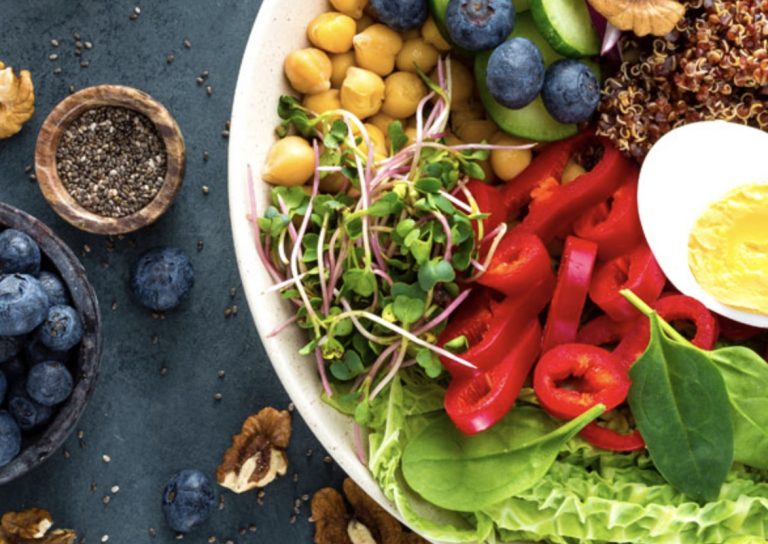2021 perhaps wasn’t the year that we wanted it to be, but it surely was an improvement on 2020. Having entered 2022 with a newfound appreciation for both health and the pleasure of the little things in life, it’s exactly the right time to take a look at the food trends that are going to shine through this year. As a general rule, we can see a deeper concern for the climate as well as our wellbeing, with a particular focus on gut health. So, without further ado, what are the top five food trends that are going to be prevalent in 2022?
1. Veto diet
You’ve heard of Keto. You’ve heard of going veggie. But a combination of the two sounds bizarre. Any Ketogenic enthusiast out there can’t stop talking about how much meat they consume, and in fact, the diet traditionally utilises a lot of meat to maintain its low-carb, high-fat balance. This is for the purpose of inducing a state of ketosis — when the body burns fat rather than carbohydrates — which supports weight control. However, with more and more people opting for vegetarian nutrition based on both health reasons and the environmental impact of the meat industry, the combination of the two seems inevitable.
Well, that’s where Veto comes in. “We rely on plant based proteins as the main element of this diet,” explains Love Yourself, who started this diet trend. “The only animal proteins we use are from eggs and dairy (no meat of any kind is included in this diet).” Veto is perfect for anyone who wants to lose or maintain weight while still reducing their meat consumption, so we believe this diet is due to become even more popular this year.
2. Environmentally-friendly grains
Grains are a staple of our diets, incorporated in almost every meal. Sadly, though, our most favourite ones are not as eco-friendly as we would like. Yes, even rice and corn — our ride-or-dies — are extremely bad for the climate. According to the Environmental Defence Fund, in terms of greenhouse gas emissions, global rice production is doing as much harm as 1,200 coal power stations. Maize is also a terrible soil pollutant, on top of being part of a production process that emits more carbon dioxide than cars.
It’s no wonder, then, that people are searching for alternative grains to replace them. These include millet, flax, amaranth and kernza. Affordable and versatile, millet is a nutritious grain full of fibre, magnesium, protein and iron, for example. All of these alternatives are delicious, nourishing and climate-friendly, so we’re likely going to witness more people reaching for these instead of quinoa.
3. MIND diet
Mediterranean-DASH Intervention for Neurodegenerative Delay, or MIND, is a diet that combines — you guessed it — the Mediterranean and the DASH diets. The former relies on whole grains, vegetables, legumes, fruits, nuts, seeds, herbs and spices, as well as olive oil, fish, seafood, dairy and poultry in moderation. The latter is a low-sodium and saturated fat diet that is rich in potassium, calcium, magnesium, fibre and protein.
MIND focuses on plant-based, minimally processed foods, with limited consumption of saturated fats and added sugars. Aptly named, it is not led by weight loss, but rather by the need to reduce the risk of dementia and promote brain health. Not only is it relatively good for the environment, as animal products are eaten in smaller quantities, it is also a delicious way to cook.
4. Lab-grown meat
Up until a few years ago, lab-grown meat was the stuff of science fiction novels. Even in 2013, when the first man-made burger was eaten in London, it was touted as unscalable at best, and a waste of time at worst. At the time, it cost £215,000 and three months to produce. Less than a decade later, though, and we’re at a completely different place on the journey. Companies like the US-based Eat Just and Israeli Future Meat are successfully manufacturing cultured meat for mass consumption to the global market.
This, of course, is far more ethical than the meat industry is right now — living animals don’t have to be involved — and it’s looking more and more like a viable solution for the catastrophic consequences this sector has on the climate. Instead of raising millions of animals for slaughter, one simple stem-cell can be grown into burgers, nuggets and other meat products. The technologies are going to improve with time, but we believe in 2022 we’ll see lab-grown meat proliferate.
5. Postbiotics
We already know what probiotics and even prebiotics are, but the term of the year is going to be postbiotics. These are created when probiotics — or healthy gut bacteria — feed on prebiotics like fibre. This fermentation process creates a byproduct that’s responsible for the proper functioning of our intestines. More specifically, postbiotics include organic acids, bacteriocins, carbonic substances and enzymes.
In other words, postbiotics are a group of beneficial compounds that can help your gut, immune system, and even allergies and heart disease. Due to their incredible effects on the body, we believe we’re going to see a growing number of postbiotic supplements on the market in 2022. However, so long as they’re still not as commonplace, Harvard Health suggests that by “increasing your intake of fermented foods, such as kefir, tempeh, and kimchi” you can improve your postbiotic production.


0 Comments